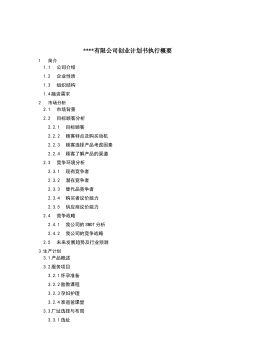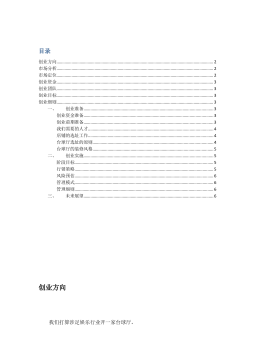激光反馈轮廓测量理论及实验研究
VIP免费
摘 要
轮廓测量是掌握物体空间分布状态信息的一种有效手段,在工业检测、自动
生产、生物医疗以及科学研究等领域有着广泛的应用。因为具有非接触、高精度、
高效率等优点,光学轮廓测量一直被高度关注和研究,也取得很大进展。
激光反馈效应的研究可以追溯至激光器诞生的第二年,最初的研究是为了消
除外部光反馈对激光器输出特性的影响。随着激光测量技术的不断发展,激光反
馈效应又被应用于一些物理量(如距离、速度、轮廓等)的测量。与传统的光学轮
廓测量系统相比,激光反馈轮廓测量系统性能更加优越,结构紧凑,光路稳定简
单,而且可实现低成本目标,因此具有广泛的应用潜力。
通过对激光反馈理论的探索以及相干猝灭下激光器特性的研究,提出了非相
干光反馈的轮廓测量系统,并对系统进行了数值仿真。理论上得出了待测目标离
焦量与反馈系数的关系以及反馈系数与激光器输出功率的关系,即随着离焦量的
增大,激光器输出功率随之下降。在此基础上,搭建三维轮廓测量平台,用平面
镜代替待测物体,得到了平面镜离焦量与激光器输出功率的变化曲线,实验结果
与数值仿真结果曲线变化趋势完全一致。
选取不同的测量样品,通过步进电机二维扫描,获得了样品轮廓的二维灰度
图。由于造成反馈系数改变的因素除离焦量外,还有样品表面各点反射率的差异,
为排除反射率差异的影响,又进行三维扫描测量。得到的样品轮廓信息与灰度图
相比,有了很大提高。随后,分析了测量过程中的主要误差来源,如焦点附近耦
合系数的恒定性、激光器自身功率漂移等,并提出相应的解决方案,得到了较好
的实验结果。最后,定性研究了测量系统横向、纵向分辨力的决定因素,以便提
高系统的分辨力。
另外,本文还研究了适用于极弱光反馈情况下的轮廓测量系统--激光频移反
馈轮廓测量系统,该方法结合了激光器动态属性和外差测量技术,使得激光器输
出功率对反馈光强度极度灵敏。因此本方案可应用于高散射、高吸收介质中轮廓
测量。通过数值仿真,证实了系统的可行性。实验中,利用布拉格衍射下的声光
调制器完成了激光频移反馈系统,为后续实验提供了理论支持和实验指导。本方
案值得进一步的研究。
关键词:激光测量 轮廓测量 激光反馈 声光调制
ABSTRACT
Profile measurement is an effective way to get the spatial distribution of targets,
and it has been used widely in industrial detection, automatic manufacturing,
biological engineering and science research, etc. Because of the advantages, such as
non-contacting, high precision and efficiency, optical profile measurement has been
paid more attention and been made tremendous progress.
The research on laser optical feedback could be traced to the year after 1960,
when laser was invented. The initial research meant to eliminate the negative impact
on the output properties of lasers, and now it has been used to measure the physical
parameters, such as distance, velocity, profile and so on. Compared with the traditional
optical profile measurement, laser optical feedback profile measurement system is
more compact and low cost, what’s more, the optical path is stable and simple. So this
method has potential to be widely applied.
In this paper, the theory of laser optical feedback has been researched and the
properties of laser in coherence collapse regime have been numerical simulated. The
theoretical results of simulation showed that as the defocus is increasing, the output of
LD is decreasing. After establishing the 3D profile measurement system, we displayed
the targets with plane mirror, and got the curve of the defocus of the plane mirror and
the output power of the laser. The experimental result is the same with the simulating
result.
With the guidance of simulation result, we set up the profile measurement system
based on non-coherent optical feedback, and get the relationship between laser output
and defocusing amount using a mirror as the target, which is in accord with the result
of simulation. Furthermore, we get the gray scale images of samples by scanning the
objects point by point using two-dimensional stepper motors. As the optical feedback
coefficient is not only affected by defocusing amount but by the reflectivity on the
surface of samples. To eliminate the affection by the difference of reflectivity, we
scanning the sample with three-dimensional stepper motors. The three-dimension
profiles of samples have been greatly improved compared with the gray scale images.
Subsequently, we discussed the source of the error, such as the unchanging of coupling
coefficient and output power shift of LD, and proposed the solution of this problem,
and, at last we got a satisfied result. At the end, we made some research on the decisive
factors of vertical resolution and horizontal resolution to improve the system’s
resolution.
In addition, another profile measurement method named laser frequency-shifted
optical feedback tomography has been researched and numerical simulated. This
method combined dynamic prosperities of laser with the laser heterodynes
measurement technology. Because of extra sensitivity to feedback light, this method
could be used to image the object immerged in high-absorption, high-scattering
solution. The simulated results confirmed the feasibility of this method and were
directive to the experiments. In the experiment, we set up the laser frequency-shifted
system with two acousto-optic modulators, which work in the state of Bragg diffraction.
This method deserves the further research and more experiments.
Key Words: Laser measurement, Profile measurement, Optical
feedback, Acousto-optic modulator
目 录
中文摘要
ABSTRACT
第一章 绪 论 .................................................................................................................1
§1.1 研究背景与课题来源 .......................................................................................1
§1.2 常见的几种光学轮廓测量方法 .......................................................................2
§1.3 非相干光反馈轮廓测量法特点介绍 ...............................................................5
§1.4 激光频移反馈法轮廓测量特点介绍 ...............................................................6
§1.5 论文主要研究内容及论文结构安排 ...............................................................6
第二章 激光反馈效应的理论分析 .................................................................................8
§2.1 激光反馈效应概述 ...........................................................................................8
§2.2 激光反馈的等效腔理论 .................................................................................10
§2.3 激光反馈的速率方程理论 .............................................................................14
§2.4 激光反馈的行波迭代理论 .............................................................................16
§2.5 激光频移反馈理论研究 .................................................................................17
第三章 激光反馈轮廓测量原理及数值仿真 ...............................................................19
§3.1 非相干光反馈轮廓测量的数值仿真 .............................................................19
§3.1.1 离焦量与反馈系数的关系 .................................................................20
§3.1.2 反馈系数与激光器输出功率的关系 .................................................23
§3.2 激光频移反馈轮廓测量的数值仿真 .............................................................25
§3.2.1 激光频移反馈系统中灵敏因子的影响 .............................................26
§3.2.2 寄生反射对系统的影响 .....................................................................28
§3.3 本章小结 ........................................................................................................29
第四章 激光反馈轮廓测量系统的构建 .......................................................................31
§4.1 非相干光反馈轮廓测量实验系统 ................................................................31
§4.2 光学反馈系统 ................................................................................................31
§4.3 步进电机扫描系统 ........................................................................................33
§4.4 数据采集处理系统 ........................................................................................34
第五章 轮廓测量的实验研究 .......................................................................................37
§5.1 激光器输出功率与离焦量的定性关系 .........................................................37
§5.2 二维扫描与灰度图重建 .................................................................................38
§5.3 三维扫描以及轮廓的重建 .............................................................................41
§5.4 测量系统的分辨本领分析 .............................................................................43
§5.5 测量系统的误差分析 .....................................................................................44
§5.5.1 注入电流漂移的影响 .........................................................................44
§5.5.2 焦点附近耦合系数不变的影响 .........................................................46
第六章 总结与展望 .......................................................................................................48
参考文献 .........................................................................................................................50
在读期间公开发表的论文和承担科研项目及取得成果 .............................................53
致 谢 .............................................................................................................................54
第一章 绪 论
1
第一章 绪 论
§1.1 研究背景与课题来源
激光反馈效应是指激光器输出光被外部物体反射或散射后,如光耦合器端面
的反射或者光学介质非线性效应造成的背向散射等,一部分光反馈回激光器谐振
腔内,而反馈光子再与腔内增益介质相互作用,引发了激光器输出功率波动[1]、频
谱特性改变[2]以及相对噪声强度增大[3]等现象[4]。由于激光反馈效应严重影响了激
光器的输出特性,极大地限制了激光器的应用,如光纤通信等,研究人员开始关
注如何消除光反馈对激光器的不利影响,如光噪声、谱线展宽[5]和相干猝灭[6]等。
随着研究的深入,激光反馈效应的应用也进入了研究人员的视线。1963 年King
等人首次观测到了由于光反馈效应导致的激光器输出功率的变化,和传统双光束
干涉现象十分相似,激光器输出功率随外部反射镜的前后移动而波动[7]。实验中发
现,外部反射镜每移动半个波长,激光输出功率变化一个周期,功率波动的深度
类似与传统的双光束干涉系统,因此激光反馈效应也被叫做激光自混合干涉。
1968 年Rudd 等人采用 He-Ne 激光器完成了散射微粒的多普勒速度测量,得
到激光器输出功率与多普勒频移之间的关系,首次将激光反馈效应应用于物理量
的精确测量[8]。从此,激光反馈现象以及基于该现象的应用引起了国内外学者的浓
厚兴趣,纷纷从研究消除激光反馈效应转变到研究如何主动利用激光反馈效应来
进行速度、位移、振动等物理量的精密测量。
基于激光反馈效应的测量仪器与传统的光学干涉仪器相比,具有同样的相位
灵敏度,都是半个波长距离对应功率变化的一个周期。而激光反馈测量系统的优
点是光路简单、结构紧凑、易准直,能适用于各类激光器,并且能够根据输出功
率锯齿波的方向来判断目标的运动方向,所以较传统光学干涉仪器有更大的应用
潜力。国内外研究人员围绕激光反馈效应展开了大量的研究,为深入了解激光反
馈的原理,人们在研究了大量实验现象的基础上,提出了相应的理论模型,对各
类现象进行了分析和理论解释。激光反馈效应必将广泛应用于位移测量[9-11]、形貌
测量[12]、速度测量[13-16]、振动测量[17-19]、决对距离测量[20]、角度测量[21]及其它物
理量的测量[22]。
20世纪
90年代以来,光学三维传感已逐渐成为当今国际上的热门研究课题之
一。美国、日本、德国、加拿大等国在该领域相继提出了许多新的测量原理和方
法,我国目前在这一领域也有了较大的研究进展。1994 年,在以信息光学为主题
摘要:
展开>>
收起<<
摘要轮廓测量是掌握物体空间分布状态信息的一种有效手段,在工业检测、自动生产、生物医疗以及科学研究等领域有着广泛的应用。因为具有非接触、高精度、高效率等优点,光学轮廓测量一直被高度关注和研究,也取得很大进展。激光反馈效应的研究可以追溯至激光器诞生的第二年,最初的研究是为了消除外部光反馈对激光器输出特性的影响。随着激光测量技术的不断发展,激光反馈效应又被应用于一些物理量(如距离、速度、轮廓等)的测量。与传统的光学轮廓测量系统相比,激光反馈轮廓测量系统性能更加优越,结构紧凑,光路稳定简单,而且可实现低成本目标,因此具有广泛的应用潜力。通过对激光反馈理论的探索以及相干猝灭下激光器特性的研究,提出了非相...
相关推荐
-
跨境电商商业计划书模版VIP免费
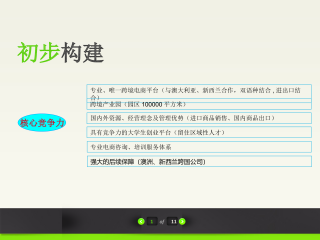
 2025-01-09 10
2025-01-09 10 -
跨境电商方案范文VIP免费
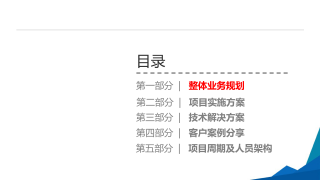
 2025-01-09 9
2025-01-09 9 -
创业计划书VIP免费
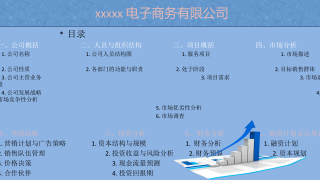
 2025-01-09 11
2025-01-09 11 -
xx生鲜APP计划书VIP免费

 2025-01-09 7
2025-01-09 7 -
跨境电商创业园商业计划书(盈利模式)VIP免费
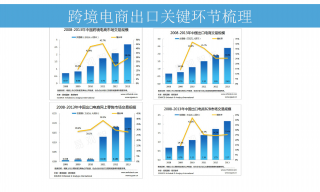
 2025-01-09 6
2025-01-09 6 -
跨境电商计划书VIP免费
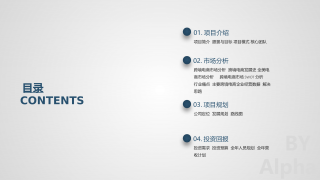
 2025-01-09 9
2025-01-09 9 -
绿色食品电商平台项目计划书VIP免费

 2025-01-09 8
2025-01-09 8 -
农产品电子商务商业计划书VIP免费

 2025-01-09 7
2025-01-09 7 -
农村电商平台商业计划书VIP免费

 2025-01-09 9
2025-01-09 9 -
生鲜商城平台商业计划书VIP免费
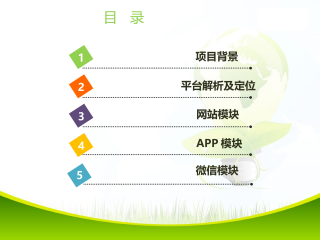
 2025-01-09 7
2025-01-09 7
作者:牛悦
分类:高等教育资料
价格:15积分
属性:57 页
大小:2.42MB
格式:PDF
时间:2024-11-19


